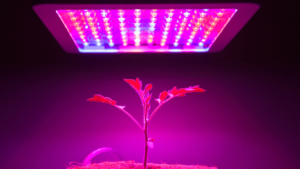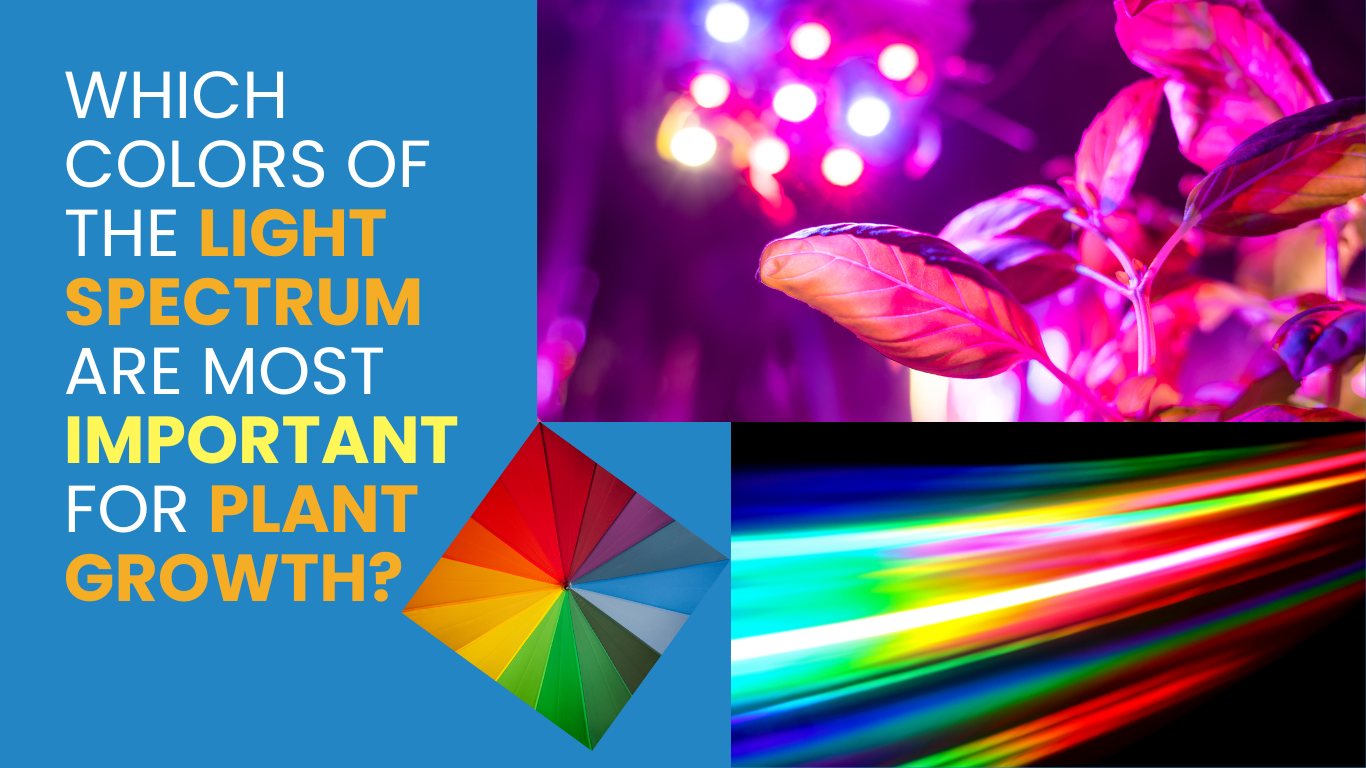The different colors of light in the visible spectrum each play an important role in plant growth. The light spectrum consists of different colors of light, each with its own wavelength. Plants use different colors of light for different purposes. For example, blue light is used for chlorophyll production, and red light is used for plant development.
Plants use light for photosynthesis, which is how they convert light into energy. Different colors of the light spectrum have different effects on plants.
Which Colors Of The Light Spectrum Are Most Important For Plant Growth?
Red and blue light are the most important colors for plant growth. Red light promotes flowering and fruiting, while blue light promotes vegetative growth. while green light is necessary for plant growth and development. Plants also need yellow and orange light for growth, but they are not as essential as red and blue light.

So How Does The Color Of Light Affect Plant Growth?
Different colors of light contain different amounts of energy. Blue and violet light waves have shorter wavelengths and more energy than red and yellow waves. That extra energy can affect how a plant grows.
Red And Blue Light Waves Are Most Important For Plant Growth. Now we will explain how these two lights are effective for plants.
How The Blue Light Colour Effect Plants Growth
Blue light is necessary for chlorophyll production. when blue light hits a plant’s leaves, it causes the plant to produce more chlorophyll. Chlorophyll is what makes leaves look green, and it’s also involved in photosynthesis, the process that helps plants convert sunlight into food. So more blue light usually means more green, leafy growth.
Role Of Chlorophyll: Chlorophyll Is Responsible For Absorbing Light
Chlorophyll is a molecule that is essential for photosynthesis, and it is responsible for absorbing light. Chlorophyll absorbs light in the blue and red wavelengths, and this absorption of light energy drives the process of photosynthesis. without chlorophyll, plants would not be able to convert sunlight into chemical energy that can be used by plants to grow and thrive.
How The Red Light Colour Effect Plants Growth
Red light is necessary for plant cell division and root growth. It has been shown that red light is required for the initiation of cell division in plants. This is because red light helps to break down the cell walls of the plant cells. Additionally, red light is necessary for the production of auxin, which is a hormone that helps to promote cell division and root growth.
Background On The Light Spectrum And Plant Growth
Plants are uniquely capable of converting sunlight into the energy they need to grow, thrive and reproduce. They use a process called photosynthesis to do this. Photosynthesis occurs in the chloroplasts of plant cells and is fueled by sunlight. Chloroplasts are organelles that contain a green pigment called chlorophyll. This pigment is essential for photosynthesis as it absorbs certain wavelengths of light from the sun.
Plants require light for photosynthesis, but not all wavelengths of light are equally effective. The visible spectrum of light, which humans can see, consists of red, orange, yellow, green and blue light. Plants use blue and red light most efficiently for photosynthesis while green and yellow light have very little effect. The amount of light that a plant receives also affects its growth.
Green And Yellow Light Waves Are Also Necessary For Plant Growth
Plants need more than just red and blue lights. They also need green and yellow light waves. Green light helps plants produce chlorophyll, while yellow light helps them produce carotenoids. Carotenoids are responsible for the yellow, orange, and red colors in fruits and vegetables.
So if you want to grow healthy plants, make sure they’re getting plenty of sunlight – and green and yellow light waves also!
What Is The Best Spectrum To Go With?
In the horticulture world, there are many different types of grow lights available on the market.
There are a few things to consider when choosing the right to grow light spectrum for your plants. The type of plant you are growing, the stage of growth, and the desired results will all play a role in determining the best spectrum for your needs.
Generally speaking, full-spectrum grow lights are ideal for all stages of plant growth. These lights emit a broad range of wavelengths that closely mimic natural sunlight. This makes them ideal for both vegetative growth and flowering.
Best Spectrum To Balance Yield And Short Stem [ Red Blue And MIGRO (3500K) Spectrum ]
For the best spectrum to balance yield and short stem, look no further than the Red Blue and MIGRO (3500K) spectrum. This powerful combination of wavelengths will help you achieve maximum yields with shorter stems. Here’s what you need to know about these three important wavelengths:
Red light is critical for photosynthesis and is responsible for driving plant growth. Blue light is also essential for photosynthesis but also helps to promote strong, healthy leaves. The MIGRO (3500K) spectrum is a special blend of wavelengths that are optimized for cannabis cultivation. This unique spectrum helps to maximize yields while also reducing the length of stems.
So if you’re looking for the best possible spectrum for your plants, go with the Red Blue and MIGRO (3500K). You won’t be disappointed!
Conclusion
In order for plants to grow, they need light. But not just any light–they need specific colors of light from the visible spectrum. Out of all the colors, red and blue light are the most important for plant growth.
Red light is responsible for promoting flowering and fruiting in plants. It also helps them grow faster and increases their overall size. Blue light, on the other hand, is necessary for healthy leaves and chlorophyll production.
While both red and blue light is essential for plant growth, different plants need different ratios of the two colors.

